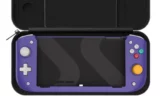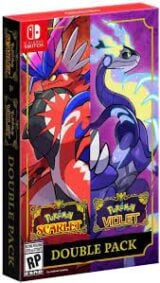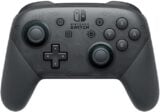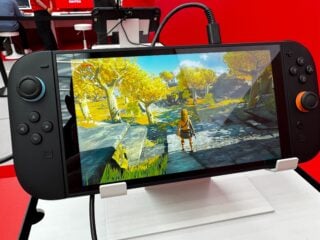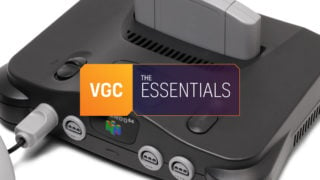History Lesson: The consoles that ‘failed’
Sega Nomad, Ouya and other troubled systems nobody bought

This article was originally published on May 1, 2019 and shared again for Christmas 2019.
Not all home consoles and handhelds are created equal. For every massive commercial success, there are sadly a number of failures that set out to change the gaming landscape and didn’t quite hit the mark.
Some of these ‘failed’ systems sold well enough that in other industries they’d, in fact, have been considered successes: Sega’s Saturn and Dreamcast sold around 9 million each, for example, which isn’t exactly a tiny number. However in games industry terms, these systems were up against competitors which outsold them many times over: 9 million doesn’t sound so hot when the PlayStation and PS2 sold 102 million and 155 million respectively.
Sometimes, though, a system’s sales are so disastrous that you can’t really say it was a triumph by any definition. These are the systems we’re looking at today.
Not all of them were objectively ‘bad’ – some were even excellent – but for various reasons, almost every system in this list sold fewer than a million units worldwide before quietly being shelved by the companies behind them.
Virtual Boy

Let’s start with arguably the most infamous example of a ‘failed’ games system. When Nintendo underperforms it usually still sells in half-decent numbers: even though the Wii U was practically on its backside from launch it still managed to shift around 14 million units.
That’s why the Virtual Boy stands out: it’s far and away Nintendo’s biggest sales disaster in terms of system launches (not counting add-ons like the 64DD).
The Virtual Boy was a strange LCD system that wasn’t exactly a home console, but still lacked the portability of a handheld. It was essentially a VR headset on a stand: when you put your eyes into the goggles, you could play games in red-and-black 3D.
In truth, the effect was actually pretty impressive and the Virtual Boy did have some genuinely good games: Virtual Boy Wario Land is one of the best games in the series and Teleroboxer is a cracking VR-style Punch-Out!! clone.
Ultimately though, reports of headaches (possibly due to people not adjusting the focus correctly) and poor sales meant the Virtual Boy only made it as far as Japan and the US before Nintendo cancelled its planned global rollout. In all, only 770,000 were sold and only 22 games were released for it.
Gizmondo
When it comes to failing to live up to initial hype, nothing was as disastrous as the Gizmondo, a handheld launched in 2005 by the UK-based Gizmondo Europe (which was a spin-off of Florida-based Tiger Telematics).
The company promised gamers the moon on a stick: the Gizmondo would offer impressive, polygonal 3D games on a portable device that could also use augmented reality, GPS location tracking, SMS messaging and the like.
The Gizmondo was hyped like nothing else before it: the company opened a flagship store in London’s Regent Street, it published magazine ads with F1 star Jenson Button, had a launch night with the likes of Pharrell Williams performing and even had one of its execs take part in the Le Mans 24-hour race in a Gizmondo-branded car.
The problem was, nobody bought the thing. Launching in the UK with only one game and costing $300 (£229), there was nothing present to build on that initial hype. The North Pole was more populated than the Regent Street store, and not even the later release of a $170 (£129) version with built-in ads was enough to build up any sort of momentum.
After selling fewer than 25,000 Gizmondos, the company went bankrupt having racked up an obscene $300 million in debt. The director was exposed as being involved with the Swedish mafia, and was then jailed for crashing an Enzo Ferrari at 162 mph in California.
By the way, if you’re morbidly curious about the Gizmondo and fancy getting one from eBay to see what it was like, prepare for even more disappointment: the console was made of an extremely cheap rubber plastic shell, meaning many of them have deteriorated over time and those that haven’t literally lose bits of rubber with the slightest bump.
Atari Lynx
A handheld only selling 25,000 units is a depressing story no matter how you look at it, so let’s cheer ourselves up with something that actually sold a few million.

The Lynx was originally designed by game publisher Epyx (creators of California Games) and known as the Handy Game. After struggling to gather the funds to make it, Epyx made a deal with Atari, who took over production and renamed it the Lynx.
In terms of hardware, the Lynx was a beast. As well as being the first ever colour handheld, it offered two sets of buttons (so left-handed players could turn it upside-down and play it more comfortably that way) and did Mode 7 style sprite scaling a good year or so before the SNES launched and made it a big deal.
Although it was a fantastic system, Atari didn’t market the Lynx enough and this, combined with the fact it hardly had any games and ate batteries like chocolate (it went through six AAs in four hours) meant it ultimately failed.
In all, Atari sold around 3 million Lynx systems. A decent number, until you consider the Sega Game Gear (which launched the following year) shifted 11 million, while the Game Boy and its Game Boy Color upgrade sold around 118 million combined.
Commodore CDTV
While console gaming ruled the roost in North America throughout the early ‘90s, there still remained a huge computer gaming market in Europe during that period.

The SNES and Mega Drive may have enjoyed a tense rivalry worldwide, but in places like the UK fans of the Commodore Amiga and Atari ST had similarly bitter conflicts.
When CD-ROM technology started to emerge, Commodore decided it wanted a piece of the action, and so it created the CDTV, a games console with multimedia features.
The CDTV’s insides were basically an Amiga 500 computer, but with all the computery bits replaced with a CD-ROM drive and a terrible infrared controller (which worked like a TV remote). That said, you could buy a keyboard, mouse and floppy disk drive separately to turn it back into its original computer form.
Priced at an eye-watering $999 / £499 (this is 1991 money too, remember), the CDTV was a disaster from day one. Not even Amiga owners were interested: they preferred to hold out for a separate CD-ROM add-on for their Amiga 500s (which eventually came).
By the time the CDTV had died, it had sold fewer than 30,000 units in the UK. But Commodore hadn’t given up on making CD-based consoles yet.
Commodore Amiga CD32
Undeterred by the failure of the CDTV, Commodore decided to have another crack at making a CD-ROM system, but this time it looked a lot more like a console and focused more on games than multimedia.

Much like the CDTV was essentially an Amiga 500 with a load of bells and whistles attached, the CD32’s innards were similar to those of the Amiga 1200.
This meant that, despite being the first 32-bit console released in the west, most of the CD32’s games tended to be Amiga 1200 games with CD soundtracks. Not necessarily a bad thing, mind you.
The CD32 actually started off reasonably well, with around 100,000 selling in Europe. Unfortunately, Commodore suffered from supply problems and wasn’t able to make enough consoles to meet demand, and the company went bankrupt only eight months after the CD32 launched.
It’s difficult to tell how successful the CD32 could have ended up becoming, but as it stands it has to go down as a failure: more down to Commodore’s business choices than the console itself.
3DO Interactive Multiplayer
When Electronic Arts founder Trip Hawkins decided to leave the company to create ‘the future of games consoles’, it’s fair to say the hype was big.

The 3DO wasn’t actually a single console, but a set of specifications that Hawkins’ company (cleverly titled The 3DO Company) would licence out to any manufacturer who fancied making their own 3DO-compatible console.
Panasonic was the first to release a 3DO console in 1993, with Goldstar and Sanyo following suit. The problem was, this licensing deal meant manufacturers only made money off hardware, not games, so because of this the consoles were never sold at a loss (as the likes of Nintendo, Sony and Microsoft often do).
The result? Panasonic’s first 3DO retailed for $699 (around $1200 in today’s money after inflation). This was far too much for most gamers, and by the time cheaper models appeared later on, the industry’s focus was already on other upcoming systems like the PlayStation, Saturn and N64.
The 3DO ended up selling around two million units worldwide, before Hawkins decided to change the company’s focus to developing games for other consoles instead.
Sega 32X

We may not be counting the Saturn and Dreamcast as outright failures, but that doesn’t mean Sega didn’t have its own Virtual Boy-sized bomb.
In 1994 the hype was building for the next generation of consoles, including Sega’s own Saturn. But there was still a little while to go before those systems would be ready, so Sega decided to get the jump on its competitors by letting its customers play 32-bit games early.
The solution was the 32X, an add-on for the Mega Drive that plugged into the console’s cartridge port and then had a port of its own for special 32X carts.
This add-on – which still needed its own power supply – was able to do a number of things the Mega Drive couldn’t, including half-decent polygon rendering for the time.
The problem was, it was always designed to be a stopgap, and players already knew the Saturn was coming so the vast majority just didn’t bother with the 32X. Not even ports of Doom, Star Wars Arcade and its own Sonic game of sorts (Knuckles Chaotix) were enough to sway fans, meaning it ended up only selling 665,000 units worldwide.
Amstrad GX4000
As we’ve already seen, not every failure is down to disastrous hardware. Sometimes platform holders can do most things right and still not be successful. This was the case with Amstrad when it decided it fancied a go at the console market.

The GX4000 was a cartridge-based system that was based on its CPC Plus home computers. It launched for a reasonable price – $130 / £99.99 – and its free game, a racer called Burnin’ Rubber, wasn’t too bad.
The main problem was a simple one: the audience wasn’t interested. The Amstrad CPC itself was third place in a three-way fight between it, the Amiga and the Atari ST, and when the company moved to consoles it didn’t fare any better.
When it launched in September 1990, British gamers knew the Mega Drive was only a couple of months away, and with very few games available during the system’s launch window it never build any sort of momentum.
Although it was a fairly powerful machine for its time, a miserable 15,000 or so GX4000 consoles were sold before Amstrad pulled the plug.
Neo Geo AES
Console manufacturers always used to promise gamers that their systems brought all the fun of the arcades to their home, but only SNK meant it literally.

Its Neo Geo system was available in two different formats: the MVS and AES. The MVS was an arcade board that arcade owners could put inside a cabinet and then buy cartridges directly from SNK (the idea being that they could rotate the games in their arcade without having to buy entirely new cabinets).
The AES, meanwhile, was a home console containing exactly the same hardware, meaning the games you played in your AES at home were the exact same games (albeit in differently-shaped cartridges) as the ones you could play in arcades.
This meant you could practice at Metal Slug, King Of Fighters and the like at home before heading to your local coin-op establishment and dishing out justice to anyone foolish enough to play against you.
The problem with this was simple: since the Neo Geo AES was obscenely powerful, it was also obscenely expensive. The console was $649 ($1,199 in today’s money), but even worse, the price for each game started at $200.
Unsurprisingly at those prices, the Neo Geo sold less than a million units worldwide. Thankfully, a huge number of Neo Geo games can now be bought for great prices on the Switch, Xbox One and PS4 digital stores.
Philips CD-i
Dutch company Philips was one of the first to implement CD-ROM technology, releasing the CD-i in 1991. Originally marketed as a multimedia system, it had its fair share of games too.

Most famously, a number of Nintendo-based games were released on the CD-i, as part of a deal that was going to have Philips develop a CD-ROM add-on for the SNES (which never happened).
These games – Hotel Mario, Zelda: The Wand Of Gamelon, Link: The Faces Of Evil and Zelda’s Adventure – were so terrible that their cutscenes continue to be used in online memes to this day.
Its multimedia features may have been impressive in an era before Windows 95 (and its video quality was surprisingly excellent if you had its optional Digital Video Card installed), but as a games console it stunk.
Final CD-i sales figures aren’t clear – a large number were bought by schools for educational purposes – but it’s estimated around 400,000 were sold in the US, and the Wall Street Journal reported in 1996 that Philips may have lost as much as a billion dollars trying to sell it in the North American market.
Atari Jaguar
While Sega and Nintendo were competing with each other in the 16-bit war and the 3DO Company was promising the dawn of 32-bit gaming, Atari decided to go one step further and launch the world’s first 64-bit console.

In reality, many have argued over whether the Jaguar was a ‘true’ 64-bit system, since its hardware actually consisted of two 32-bit chips codenamed Tom and Jerry.
Regardless, there was no denying the Jaguar had some serious power. Its port of Doom was truly impressive at the time, and games like Alien vs Predator and Tempest 2000 were visually stunning.
The problem was, these great games were few and far between, and the majority of software released near launch (including the bundled game Cybermorph) looked good but played poorly.
This, combined with its horrible 17-button controller that looked more like a telephone keypad, kept video game fans away. In 2001, UK company Telegames tried to shift some stock by doing a deal with retailer GAME to sell Jaguar consoles for a mere £29.99 ($39). Despite this, the Jaguar still only sold around 250,000 units worldwide.
Sega Nomad
Most retro gamers remember the Sega Game Gear, which was essentially a handheld version of Sega’s 8-bit Master System console. Less well-remembered is the Sega Nomad, which did the same thing but with the 16-bit Mega Drive.

Released in North America near the end of 1995, the Nomad crammed all the innards of the Mega Drive into a slightly bulky handheld. It supported regular Mega Drive cartridges, meaning gamers could play their favourite 16-bit games on the move.
It even doubled as a home console for those who didn’t have a Mega Drive in the first place: an AV connector let players plug the Nomad into a TV and play games on the big screen.
It was doomed to failure from the beginning, though. While the Nomad was undeniably an impressive machine (even though it went through six AA batteries in 2-3 hours), Sega’s Japanese bosses weren’t interested in pushing it because the Saturn had already launched in Japan and was doing well there.
As a result, even though the Nomad managed to shift around a million units, it was never released anywhere outside North America and was quietly scrapped so Sega could concentrate on messing up the 32X instead. Um, we mean prepare for the Saturn launch.
Tiger Game.com
If you grew up in the late ‘80s and early ‘90s, chances are at one point in your life you found yourself playing a Tiger Electronics handheld game.

These clunky LCD bricks were often glorified Game & Watches, providing extremely basic games based on whatever licensed properties Tiger could get the rights to.
In 1997, Tiger decided it was time to step up its game and compete with the big boys by actually creating its own handheld video game system called the Game.com (pronounced just “game com”).
In many ways it was revolutionary: it was the first games device with a touch screen, it let you connect to the internet, and it had some fairly surprising ports including the likes of Resident Evil 2, Sonic Jam, Fighters Megamix and Duke Nukem 3D.
Unfortunately, the screen was blurrier than a drunk’s vision, and the games were generally terrible. Not even a redesigned, newer model with a slightly better screen and an attractive $29.99 price point was enough to gather interest.
Fewer than 300,000 Game.com systems were sold worldwide before Tiger gave up. Luckily for Tiger, it was probably too busy counting its money from hugely successful new toy, Furby, to really care.
OnLive
If you think game streaming via the cloud still has a little while to go before it works perfectly, imagine what it was like back in 2010.

This was the concept offered by OnLive, a cloud gaming service that let players either ‘buy’ streaming versions of new games or subscribe to a PlayPack service which offered a collection of older titles on demand.
OnLive could be played through PCs, Macs, Android devices and internet media players like the Amazon Fire Stick, but the company’s flagship way of playing was the OnLive Game System, a small microconsole that handled the streaming and came with USB ports for its (actually very comfortable) controller, or a mouse and keyboard.
Although OnLive was ahead of its time in a number of ways – not only is cloud streaming only just becoming popular now, but it also introduced other now-standard features like a ‘share’ button that captured the last 30 seconds of gameplay – the world’s online infrastructure just wasn’t ready for it and issues like lag and poor video quality were rife.
OnLive officially stated that it had 2.5 million users, but that included people who tried out the free trial then realised it wasn’t for them. In reality, the service only ever reached a maximum of 1,600 users playing at the same time.
In 2015, Sony bought OnLive’s patents, and then launched PlayStation Now using the infrastructure of OnLive’s former rival Gaikai.
Ouya
“It’s time to upend console gaming.” This was the bold claim made on the Kickstarter campaign page for the Ouya, an Android-powered microconsole aimed at gamers bored of the apparent lack of creativity in triple-A titles.

The Ouya let developers create whatever games they wanted and add them to the console’s game store, with only one condition: each game had to be ‘free to start’ in some way. A noble idea, but one that ultimately ended in a lot of short demos followed by “buy the full game now” prompts.
The Ouya had some interesting ideas. Every console was also a development kit, and the company also launched a ‘Free The Games’ fund, where it would match the funds raised for any game’s Kickstarter campaign as long as the game was an Ouya exclusive for six months.
Although its own Kickstarter was a huge success, raising $8.5 million and becoming the site’s eighth-highest earning campaign, things quickly dried up after that. The 63,000 backers on Kickstarter made up the majority of the console’s user base, and hardly anyone bought an Ouya after the campaign ended.
Even worse, the free-to-play element resulted in hardly anyone actually buying any games on the Ouya store. Towerfall, the most popular game on the system and top of its digital store charts for almost the entirety of the Ouya’s life, only sold 7,000 copies.


